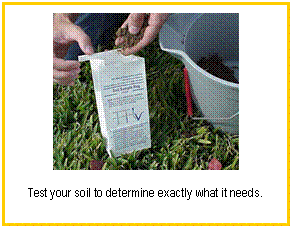
Well, the dark days of winter are upon us and the garden is probably looking a little bleak. We are all basking in the few hours of sunlight we are getting, like lizards trying to energize for the day. While there isn’t a lot to do in the garden right now, you can start thinking about what to plant for spring and it’s almost time to start your seeds indoors for transplanting in spring. Here are a few tips and tricks to help you be more successful.
#1 Get Fresh Seeds
TGO carries a number of different seed lines and tries to offer Austin’s best seed selection. A little research before hand is a great thing. Don’t buy a paste tomato if you want a slicing fruit, etc… Sometimes a large selection is a great thing, sometimes it’s a bit overwhelming.
#2 Get a Seed Starting Mix
Garden soil is not a good choice, as it compacts too easily and can harbor organisms that cause diseases. A commercially prepared seed starting mix is recommended. Avoid mixes that have a high fertilizer content, as this causes more problems than good. TGO carries a couple of special seed starting mixes, plus our own TGO brand of potting soil is coir based, and coir is an excellent medium for seed starting.
Combine the seed starting mix thoroughly with warm water to bring it to a useable state. This may take quite a lot of mixing, as completely dry mixes can be difficult to wet. Sometimes it's best to let the moistened mix sit overnight to be sure that it is evenly wet. The final mix should be damp like a wrung-out sponge, not soaked or soggy.
#3 Select Some Containers
Tomato seeds will germinate in anything as long as the seeds get moisture and warmth. After germination and initial growth, the seedlings need to be potted up to larger containers. Containers must be able to drain excess water. If using old or previously used containers, its best to sterilize them with a 10% bleach solution.
Your choice of containers for potting up depends on the number of plants you desire. Professional nurseries use growing "flats" with various-sized plastic cell inserts. Many sizes and kinds of flats are commercially available to the home grower, but they are not essential. TGO has these and other options for sale in our tool room.
#4 Determine When to Start
Many novices fail at starting tomatoes simply because they start too early. Given the proper care, full-sized tomato transplants can be grown in 6 to 8 weeks.
Before planting seeds, you must determine when your plants can be safely placed into the garden. Planting outdoors is best done about 1 or 2 weeks after the average last frost date, which is March 15th for Austin. Many people will place plants out earlier, but one good freeze and any lack of protection will kill a young plant easily.
#5 Plant Your Seeds
Fill a small container with damp seed starting mix. Plant your seeds about 1/8 inch (3 mm) deep. Firm the mix lightly to ensure that the seed is in direct contact with the moist mix. The seed needs to absorb moisture during the germination process.
You can plant lots of seeds close together because the resulting seedlings will be moved to larger containers after germination (when the first true leaves appear).
It is a good idea to provide some sort of covering over your germination containers to preserve moisture. You can place the container in a plastic bag or cover it with a sheet of plastic. Allow for some air to circulate but don't let the mix dry out. Dry seeds will not germinate.
#6 Patiently Wait for Germination
Place the germination container in a warm location out of direct sunlight. Light is not needed during the germination process, but will not be harmful as long as high temperatures are avoided. Special heat mats for seed germination are available at TGO and really help get seeds going quickly. This may the best tip you can take away from this article.
Tomato seeds usually germinate within 5 to 10 days when kept in the optimum temperature range of 70 to 80F (21 to 27C). Germination is delayed by lower temperatures and accelerated by higher temperatures. Temperatures below 50F (10C) or above 95F (35C) are detrimental to germination. Other plants may be a little slower or faster to germinate, but a week or two is nearly universal.
Keep a close eye on the first seedlings, as they need to be moved into bright light as soon as they emerge from the soil. They will explosively reach for light, and if the light is not adequate, you will get 3-inch-long (8 cm long) stems shortly after germination - this is very undesirable. If this occurs, you could try to transplant to a deeper container, or you may want to start over.
#7 Put the Seedlings under Light
Very strong light is needed to support tomato growth. A heated greenhouse is the ultimate location to continue growing your seedlings. A second choice would be a cold frame (possibly with supplemental heat for cool nights).
Many home growers use inexpensive fluorescent shop lights. The “Jump Start” light system we sell at TGO is a great solution if a good window is not available. A south-facing windowsill can work but usually presents more problems than the fluorescent shop light setup.
If fluorescent shop lights are used, the leaves of the plants must be within inches of the bulbs. Use your own creativity to make a setup that gets the plants directly under the bulbs. The lights should remain on for 16 to 18 hours per day.
#8 Monitor the Plants as They Grow On
Tomato seedlings grow best at a temperature of about 65F (18C) with some air circulation and lots of light.
When watering, most growers soak the mix and then let it get nearly dry before providing more water.
When the plants develop their first true leaves, they should be transplanted into larger individual containers. The plants actually benefit from this re-potting step, as it helps them develop a strong root system. The plants may be set deeply into their new containers to shorten the height of the seedling (tomatoes only).
Most commercial seed starting mixtures have a small amount of fertilizer that will support small seedlings for some time. Depending on the components of your starting mix, you may need to begin fertilizing. If you do fertilize, do it very, very sparingly with a weak dilution.
Depending on the size of your containers and your growing conditions, you may need to pot up a second or third time to prevent your plants from becoming rootbound.
The plants require good lighting to continue to grow well. Place the plants where they get plenty of sunlight, and if that is not possible or adequate, use fluorescent fixtures, or specialized high-intensity grow lamps, or use a combination of natural and artificial lighting.
Keeping large tomato plants indoors, under artifical lighting, can be quite difficult. To avoid problems, don't start too early. The best solution to the lighting dilemma is to plan your seed starting date so that the transplants reach a reasonable size along with the arrival of suitable outdoor temperatures.
#9 Harden Off your Transplants
Introduce the plants to outdoor conditions slowly. This is called "hardening off". If it is not done slowly your plants may be shocked and their growth may temporarily cease.
The longer the plants remains indoors, the harder it will be to acclimate them to the outdoors. Avoid full sun and wind when you first move them outside.
Cold frames can be used to harden off the plants. The covers can remain in place on inclement days and removed on moderate days.
Temporary structures can be built from plastic sheeting. Buildings and fences can be used to provide sun and wind protection while the plants adapt to outside conditions.
If really cold weather is forecast <40F (4C), it is best to bring the plants back inside. Freezing temperatures will destroy your plants (and it happens fast).
After the transplants are hardened off, they can be planted to their final outdoor growing locations either in the garden or in large growing containers. Most agree that any early blossoms should be plucked off prior to transplanting. Others leave the early blossoms in place, especially if the transplant is strong, healthy, and not rootbound.
Common Problems
Leggy Seedlings
The plants can become "leggy," the stems being elongated and limp, and the foliage sparse. Leggy seedlings usually occur due to insufficient lighting, too much heat, or too much fertilizer. Suggested remedies, short of starting over, are to repot the plants deeper as described earlier in Step #8 (tomatoes only) , and to use a fan to improve air circulation and keep temperatures moderated, resulting in stockier and stronger plants.
Damping Off
Characterized by lack of germination (pre-emergent) or causes narrowing of the newly emerged stems at the soil line and the tiny seedlings then flop over and die (post-emergent). Various fungi are responsible for the condition and they are found in high concentrations in any mix with real soil. That's why it's best to use the artificial seed starting mixes mentioned in step #2. Also, it's very important to be sure that plastic domes or baggies on your containers are not airtight. If these precautions are observed, it is unlikely that you will experience damping off.
Slow Growth
When seedlings refuse to grow it is usually because the temperature is too low or the nutrient level is insufficient.
Stuck Leaves
Sometimes the cotyledons (the first leaves formed from the seed) have trouble getting loose from the seed coating. Be patient, as the leaves will usually escape. You could wet the seed coating, or you could try to carefully pinch off the seed coat, but if you pinch off the cotyledons, the seedling will likely die. A simple way to wet the seedlings is with a spray bottle of water set to mist. A small drop of saliva is also very effective at loosening seedcoats.
Over-watering
Many growers fail with tomato plants because they over-water. Soggy soil will cause seed to rot. Once the seedlings are growing, they should be watered thoroughly then left un-watered until they are almost ready to wilt.
Over-fertilizing
Overfertilizing can cause seedlings to die, to stop growing, or to grow rapidly into spindly plants. One or at most 2 applications of very dilute fertilizer are adequate to get a seedling through to transplant size.


